Data and Analytics: The Key to the Future of Insurance Underwriting

Back in 2019, the global insurance analytics market held a value of USD 7.6 billion. Projections indicate that it will experience a compound annual growth rate (CAGR) of 11.7% from 2020 through 2027. This growth is primarily attributed to the increasing application of advanced analytics techniques and data-oriented decision-making approaches within the insurance sector.
Furthermore, the integration of insurance analytics tools and services by small- and medium-sized enterprises is expected to drive market demand over the forecasted period. The ascent of IoT insurance is set to gather momentum, enabling insurers to introduce novel services and actively engage with their clientele, ultimately fostering market expansion.
According to a survey conducted in 2020, 20% of customers cited a lack of personalization as their motive for changing insurance providers. Consequently, the insurance industry is gaining momentum and adapting to the dynamic market conditions, which is triggering a transformation in traditional roles, including underwriting functions.
This transformation is indeed logical, given that administrative tasks consume 40% of the time for U.S. life insurance underwriters, as revealed in our study involving 500 professionals. The encouraging news is that insurance companies can tap into the extensive available data to enhance underwriting processes and significantly enhance customer experience (CX).
In line with a report by Gartner (Richard Natale, Kimberly Harris-Ferrante, August 2022), mainstream adoption of digitally engineered underwriting in the global life insurance industry is anticipated by 2027. This adoption is projected to yield substantial revenue increases and enhanced underwriting profitability, consequently leading to an improved customer experience.
With this in mind, let’s delve into how the landscape of insurance underwriting is currently undergoing transformative changes, guided by the influence of data and analytics.
Streamlining Data, Analytics, and Underwriting
- Accelerated Processes: AI and automation streamline third-party data use for underwriters, boosting efficiency and speeding up insurance industry processes. Technologies like AI, ML, and IoT enhance risk prediction.
- Enhanced Risk Evaluation: Data analytics replaces intuition-driven underwriting with comprehensive risk assessment, reducing manual evaluation time. Insurers can set premiums based on risk levels with accuracy.
- Efficient Risk Assessment: Access to data empowers insurers for quick and accurate risk evaluation. Instant approvals for low-risk applicants, while predictive models target high-risk cases for manual review, enabling effective decision-making.
- Accuracy and Automation: Third-party data use, aided by AI, aids underwriters’ core competencies. Administrative tasks can be streamlined through underwriting data platforms, improving accuracy and speed.
- Generational Appeal: Data-driven personalized offers attract diverse demographics, including millennials and Gen Z. Transparency and inclusiveness in communication and products lead to immersive engagements.
- Role Transformation: Automation of routine tasks enables underwriters to acquire new skills. They evolve into roles like dealmakers, data pioneers, and risk detectives, enhancing their value and capabilities.
Calling it a day
Quicker choices, improved pricing models, and dedicated applicant focus are among the direct advantages that the field of insurance underwriting can expect in the future, facilitated by data and analytics. Do these points resonate with you as an insurance provider or an insurtech company?






